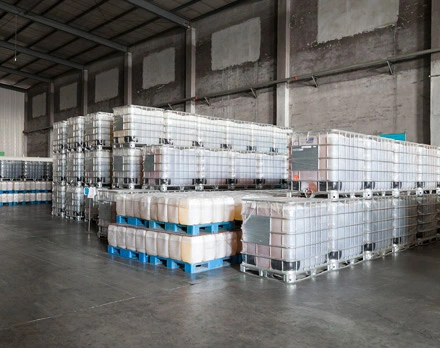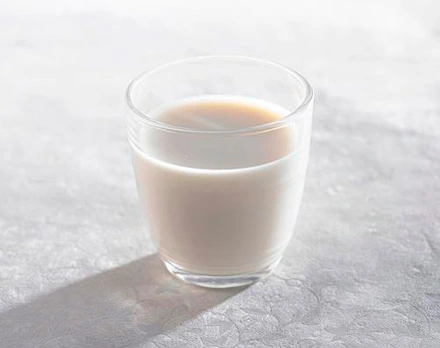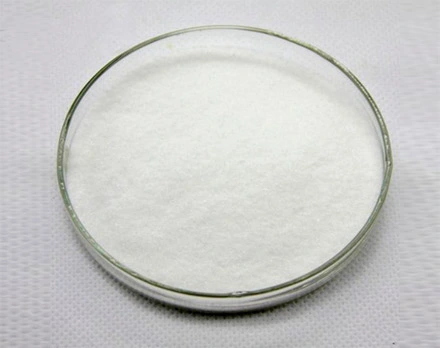The Multiple Applications of Fructose Syrup in the Food Industry
The Multiple Applications of Fructose Syrup in the Food Industry
I. Introductions to Fructose Syrup.
Fructose glucose syrup, also known as high fructose syrup or isomorphic syrup, is a mixed syrup obtained by enzymatic conversion of starch. It is mainly composed of fructose and glucose, and its sweetness and characteristics vary depending on the fructose content. Due to its unique sweetness synergistic effect and other physical properties, fructose syrup is increasingly being used as a substitute for sucrose in food processing.
Fructose syrup, also known as high fructose syrup or isomorphic syrup, is a mixed syrup composed mainly of fructose and glucose, which is obtained by enzymatic saccharification of starch using glucose isomerase to convert a portion of glucose into fructose. Due to the fact that fructose is not affected by insulin in metabolism and enters the bloodstream at a slower rate, the range of blood sugar changes is relatively small. Currently, fructose syrup is becoming increasingly widely used as a substitute for sucrose in the field of food processing.
II. Characteristics and applications of fructose syrup.
Fructose syrup is a high sweetness starch sugar that is colorless, odorless, pure in sweetness, and has good fluidity at room temperature. It is a new type of sugar source that can replace sucrose. Due to its sweetness and characteristics comparable to sucrose, high fructose corn syrup has a wider range of applications than sucrose. It is not only widely used in food, fruit heads, jam, dairy products, beverages, cold drinks, fruit juice, candied fruits, alcoholic beverages, but also in health food, household seasonings, daily chemical industry and other fields. In beverage production and food processing, it can partially or completely replace sucrose, which has a richer flavor. When applied to beverages, it can maintain the original fruit aroma of fruit juice drinks.
III. Physical and chemical properties.
1. Chemical stability.
Fructose and glucose have reducibility, poor chemical stability, and are prone to browning and coloring reactions.
Both glucose and fructose have the most stable pH values, with glucose being most stable at pH 3.0 and fructose being most stable at pH 3.3.
2. Osmotic pressure.
Fructose syrup has high osmotic pressure, which can inhibit microbial growth and has anti-corrosion and preservation effects.
Using fruit glucose syrup to process candied foods can preserve the natural flavor of the fruit and prevent its surface from drying up and turning over, which is more conducive to food preservation than sucrose.
3. Solubility.
The solubility of fructose is the highest among sugars. At temperatures of 20 ℃, 30 ℃, 40 ℃, and 50 ℃, the solubility of fructose is 1.88 times, 2.0 times, 2.3 times, and 3.1 times that of sucrose, respectively.
4. Good moisturizing properties.
Fructose is an amorphous monosaccharide with high hygroscopicity.
Fructose syrup has good water retention and drying resistance, which can keep the product fresh and soft, and extend the shelf life of the product.
5. Coking property.
Fructose and glucose are both reducing monosaccharides.
During baking, fructose and glucose undergo Maillard reaction, making bread easy to color with a layer of burnt yellow on the surface, which is beautiful and has a good flavor.
-
Inulin
-
Polydextrose
-
Resistant Dextrin
- Trehalose
- Resistant Dextrin(Soluble Corn Fiber)
- Resistant Dextrin(Soluble Corn Fiber)(Powder)
- Resistant Dextrin(Soluble Tapioca Fiber)(Powder)
- Resistant Dextrin(Soluble Tapioca Fiber)(Liquid)
- Resistant Maltodextrin Powder
- Resistant Maltodextrin Powder (Liquid)
- Organic Resistant Dextrin Powder (Corn Type) 70%
- Organic Resistant Dextrin Powder (Corn Type) 90%
- Organic Resistant Dextrin Powder (Tapioca Type) 70%
- Organic Resistant Dextrin Powder (Tapioca Type) 90%
- Organic Resistant Dextrin Syrup (Corn Type) 70%
- Organic Resistant Dextrin Syrup (Corn Type) 90%
- Organic Resistant Dextrin Syrup (Tapioca Type) 70%
- Organic Resistant Dextrin Syrup (Tapioca Type) 90%
- Organic Resistant Maltodextrin Powder (Corn Type) 70%
- Organic Resistant Maltodextrin Powder (Tapioca Type) 70%
- Organic Resistant Maltodextrin Syrup (Corn Type) 70%
- Organic Resistant Maltodextrin Syrup (Tapioca Type) 70%
- Organic Soluble Corn Fiber Powder 70%
- Organic Soluble Corn Fiber Powder 90%
- Organic Soluble Corn Fiber Syrup 70%
- Organic Soluble Corn Fiber Syrup 90%
- Organic Soluble Tapioca Fiber Powder 70%
- Organic Soluble Tapioca Fiber Powder 90%
- Organic Soluble Tapioca Fiber Syrup 70%
- Organic Soluble Tapioca Fiber Syrup 90%
- Resistant Dextrin Powder (Corn Type) 70%
- Resistant Dextrin Powder (Corn Type) 90%
- Resistant Dextrin Powder (Tapioca Type) 70%
- Resistant Dextrin Powder (Tapioca Type) 90%
- Resistant Dextrin Syrup (Corn Type) 70%
- Resistant Dextrin Syrup (Corn Type) 90%
- Resistant Dextrin Syrup (Tapioca Type) 70%
- Resistant Dextrin Syrup (Tapioca Type) 90%
- Resistant Maltodextrin Powder (Corn Type) 90%
- Resistant Maltodextrin Powder (Tapioca Type) 90%
- Resistant Maltodextrin Syrup (Corn Type) 90%
- Resistant Maltodextrin Syrup (Tapioca Type) 90%
- Soluble Corn Fiber Powder 70%
- Soluble Corn Fiber Powder 90%
- Soluble Corn Fiber Syrup 70%
- Soluble Corn Fiber Syrup 90%
- Soluble Tapioca Fiber Powder 70%
- Soluble Tapioca Fiber Powder 90%
- Soluble Tapioca Fiber Syrup 70%
- Soluble Tapioca Fiber Syrup 90%
-
Dioscorea Opposita Dietary Fiber
-
Wheat Dietary Fiber
-
Oat Dietary Fiber
-
Polydextrose Powder (Conventional Type)
-
Polydextrose Powder (Special Type)
-
Polydextrose Powder (Sugar Free Type)
-
Polydextrose Powder (Type II)
-
Polydextrose Powder (Type III)
-
Polydextrose Syrup (Conventional Type)
-
Polydextrose Syrup (Refined Type)
-
Polydextrose Syrup (Special Type)
-
Polydextrose Syrup (Standard Type)
-
Polydextrose Syrup (Sugar Free Type)
- Fructo Oligosaccharide
-
Malt Oligosaccharide
- Isomalto-oligosaccharide 900 Powder
- Isomalto-oligosaccharide 900 Powder(Corn)
- Isomalto-oligosaccharide 900 Powder(Tapioca)
- Isomalto-oligosaccharide 900 Syrup
- Isomalto-oligosaccharide 900 Syrup(Tapioca)
- Isomalto-oligosaccharide 900 Liquid (Corn)
- Isomalto-oligosaccharide 900 Liquid (DP3)
- Isomalto-oligosaccharide 900 Liquid (Tapioca)
- Isomalto-oligosaccharide 900 Powder (Corn)
- Isomalto-oligosaccharide 900 Powder (DP3)
- Isomalto-oligosaccharide 900 Powder (Tapioca)
- Organic Isomalto-oligosaccharide 900 Liquid (Corn)
- Organic Isomalto-oligosaccharide 900 Liquid (DP3)
- Organic Isomalto-oligosaccharide 900 Liquid (Tapioca)
- Organic Isomalto-oligosaccharide 900 Powder (Corn)
- Organic Isomalto-oligosaccharide 900 Powder (DP3)
- Organic Isomalto-oligosaccharide 900 Powder (Tapioca)
- Xylo-oligosaccharide
- Galacto-oligosaccharide
-
Mannan Oligosaccharide
-
Isomaltulose Powder
-
Saigao Stachyose






